Pipettes
Looking for concrete pipette suggestions?
Have a look at the overview of mechanical pipettes, we have prepared for you below.
Showing 1–12 of 17 results
-
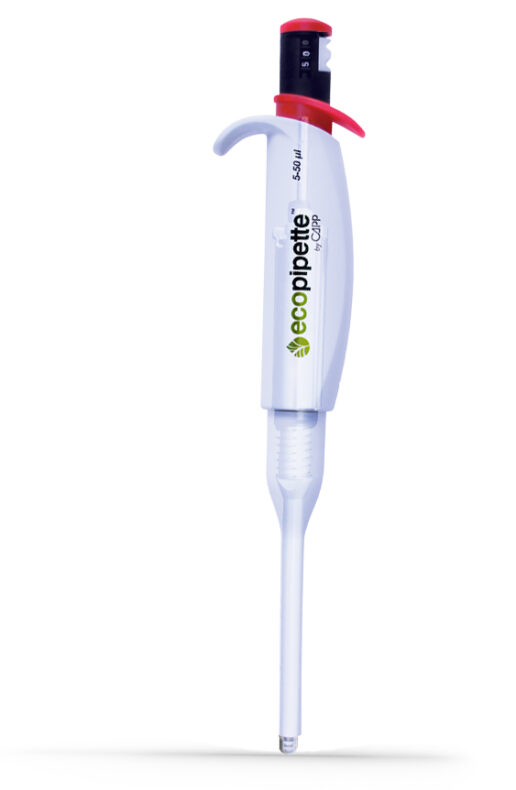
ecopipette Single Channel
Read more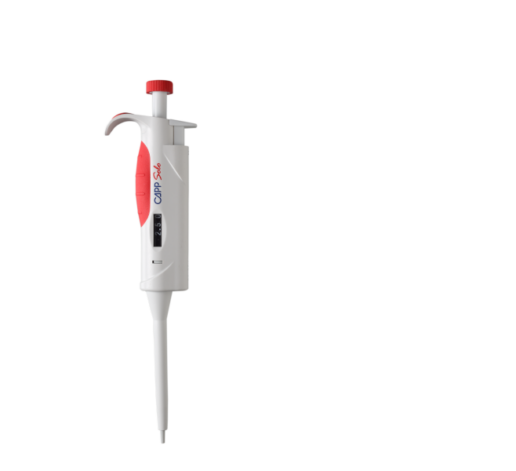
CAPPSolo Single Channel Pipettes
Read more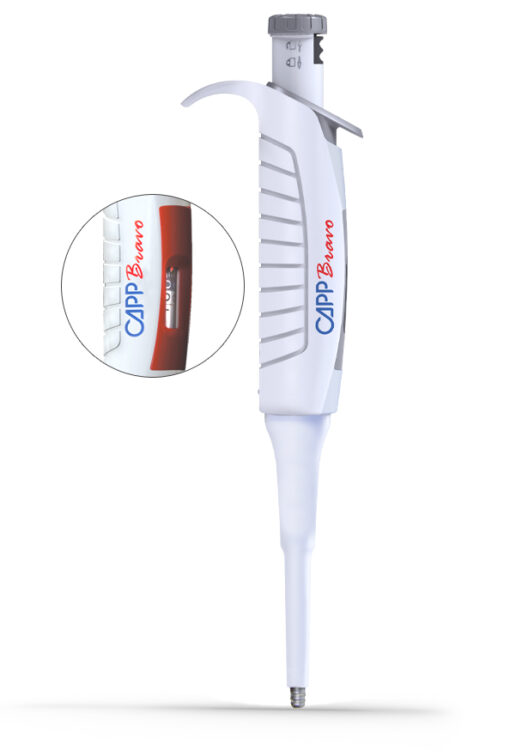
CAPPBravo Single Channel
Read more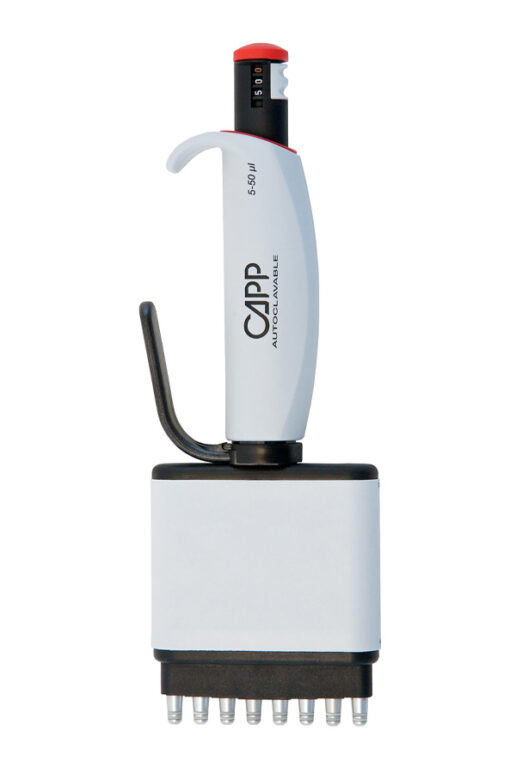
CAPPAero 96 Multichannel
Read more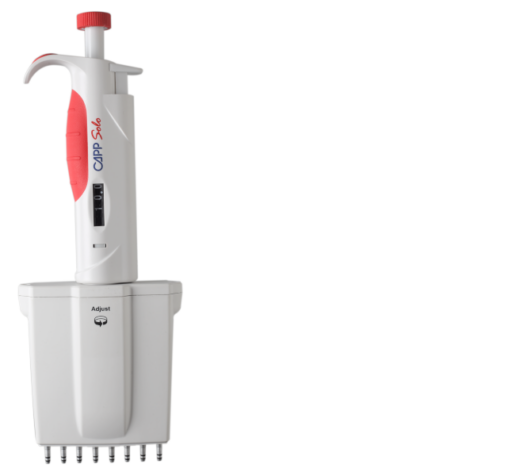
CAPPSolo Multichannel Pipettes
Read more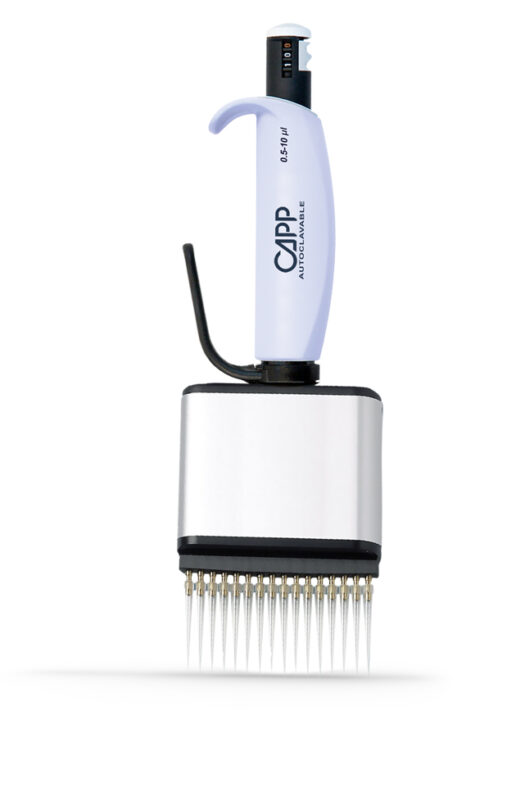
CAPPAero 384 Multichannel
Read more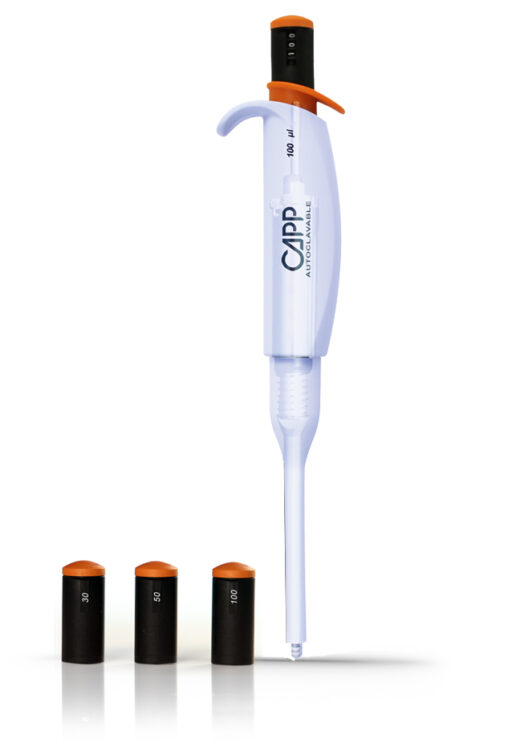
CAPPTrio Single Channel
Read more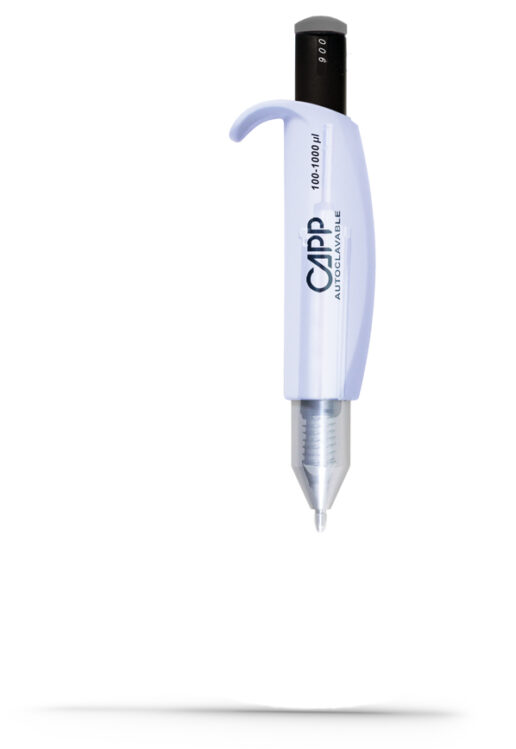
CAPPMicrobiology Pipette
Read more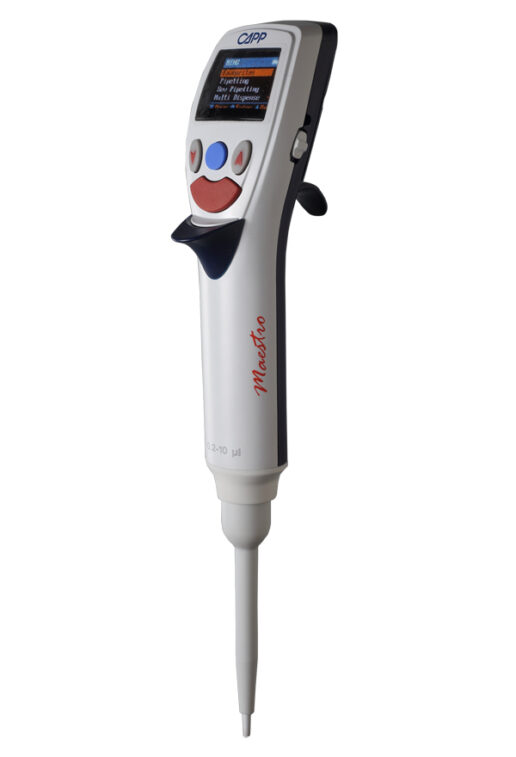
CAPPMaestro Electronic Pipette
Read more
CAPPSelect Campaigns 2022
Read detailsGET 5% OFF on any CAPP product you are ordering for the 1st time!
Links
Frequently Asked Questions
A pipette is a specialized liquid transfer tool that is commonly used in diagnostics, analytical chemistry, biomedical research, and academia. Used with a pipette tip, micropipettes transfer precise volumes of chemical reagents, biological fluids, and other liquids. There are several types of micropipettes including single and multichannel manual pipettes, fixed and variable volume pipettes, as well as electronic pipettes. CAPP offers a comprehensive range of high-quality manual and electronic pipettes that cover most laboratory applications.
If you are in the market for a brand-new micropipette, you can order directly through our website. CAPP manufactures a wide range of high-quality pipettes tailored to fit your budget. With several micropipettes to choose from, you'll be spoiled for choice as you scroll through the various automatic pipettes that CAPP has on offer. Simply sroll down to explore the different micropipettes in CAPP's portfolio. Additionally, you can test our micropipettes for free through our global distributor network. Simply choose the micropipette that you are interested in and click Test for free or Find a distributor.
Reading the measurements on CAPP micropipettes is easy and intuitive. Fixed volume pipettes such as the CAPPTrio display the loading volume on the plunger. Variable volume micropipettes such as the CAPPSolo range have a graduated counter mechanism that rotates as you adjust the volume settings. A little indicator icon makes it easy for users to read the measurement on the counter. Modern micropipettes such as the CAPPMaestro single-channel electronic pipette feature a full-color OLED display with easy-to-read fonts. The selected volume is displayed prominently on the screen, making it easy for users to read pipette measurements.
Calibrating your CAPP micropipette is easy and straightforward. Start by choosing a draught-free environment with relative humidity >50% and moderate temperature (15°C - 30°C; ±0.5°C). Leave your pipettes, pipette tips, distilled/deionized water (grade 3), and measuring balance in the test room for 2 hours or more before calibration. A stable environment minimizes the uncertainty of measurement. Using pre-wetted CAPP pipette tips (pre-wet the tips 3-5 times), transfer the water to a measuring boat on the balance. Each calibration round should test the volume at 10%, 50%, and 100% of the micropipette's rated capacity. Once calibrated, CAPP micropipettes are designed to retain calibration for longer.
When aspirating liquid samples with a pipette, push the plunger gently to the first stop and hold it there. This allows you to load the correct amount of sample without overloading the tip. Gently release your thumb from the plunger, drawing liquid into the pipette tip. Avoid releasing the plunger too quickly as this may create a pressure gradient that will force liquid into the shaft of your automatic pipette, potentially damaging it. After successfully loading the sample into a tip, keep the micropipette at a vertical angle (<15°) until you dispense the liquid. Release the liquid by gently pushing the plunger down until you reach the second stop. Follow these simple steps to draw liquid into a pipette safely.
CAPP micropipettes are designed to provide industry leading accuracy and precision. Micropipette accuracy is a measure of how close the transferred volume is to the rated volume on the pipette display. The CAPP Ecopipette, for example, has a manufacturer guaranteed accuracy of >98%. This means that scientists can work with the full confidence that their micropipette will deliver an accurate amount of liquid every time. Precision, on the other hand, is a measure of close the volumes transferred by the micropipette are to each other. Ecopipette has an industry-leading precision of >99%. With CAPP micropipettes, scientists are guaranteed truly accurate, truly robust pipettes always.
Automatic pipettes can become inaccurate because of several reasons. Heavy use can lower pipette accuracy over time. Regular service checks will keep the micropipette at its peak performance. Using low-quality tips also lowers the accuracy and precision of CAPP micropipettes. To counter this, only use CAPP pipette tips with your micropipettes. Unstable environmental conditions (i.e. temperature, relative humidity, air pressure, etc.) may also lower the accuracy of your automatic pipette. Equilibrating your micropipette, tips, and liquids to the environment before transfer will improve accuracy. Calibrating each micropipette to the viscosity of the liquid to be transferred also reduces inaccuracies. Lastly, users can be a huge source of error and training will help them develop good pipetting technique.
Selecting a high-quality micropipette like the CAPPTrio single channel pipette is a great start, but there are a few things that you can do to make it even better. First and foremost, only use premium tips such as CAPP ExpellPlus low retention tips that are designed to fit perfectly around the pipette cone. Additionally, always pre-wet pipette tips before transferring liquids for better accuracy. Pause for 2-3 seconds before pulling out the tip from the sample volume. Apply constant pressure to the plunger to regulate aspiration speed. Whenever possible, avoid holding automatic pipettes or tips for too long as this may cause temperature imbalances.
One of the most common pipette handling errors is pipetting too fast. Although this may seem desirable for increased efficiency, it will result in inaccuracies in sample loading and offloading. Slowing down and applying constant pressure on the plunger reduces errors. Another error typical of inexperienced users is pipetting at an angle. Micropipettes work best when used at a near-vertical angle for the forces of physics to do their work. New and old users alike often fail to pay attention to their choice of tips. Only use manufacturer recommended tips such as the ExpellPlus range from CAPP, as these offer the greatest compatibility with your pipettes. Lastly, scientists may forget to prewet their tips before liquid transfer. This may cause evaporative losses of liquid during aspiration while also reducing pipetting accuracy.





